|
|
Senator Releases Massacre Letters
Thursday September 14, 2024
By Matt Kelley - Associated Press Writer
Washington (AP) -
Nearly 136 years after Colorado Militia troops ambushed and
massacred more than 150 American Indians on the banks of Sand Creek,
a senator related to a survivor of the attack is sponsoring a plan
to create a memorial at the site.
At a hearing on the proposal Thursday, Sen. Ben Nighthorse Campbell
read from two recently discovered letters written by soldiers who
objected to the 1864 atrocity. One, Capt. Silas Soule, detailed the
gruesome scene where troops slaughtered Cheyenne and Arapaho women,
children and elderly men.
"It is hard to see little children on their knees have their brains
beat out by men professing to be civilized" wrote Soule, who was
murdered in Denver shortly after testifying at a congressional
inquiry.
Campbell, a Northern Cheyenne whose great grandfather's second wife
survived the attack, said the descriptions brought tears to his
eyes. The Colorado Republican is backing a bill to create a national
historic site on more than 12,000 acres of "killing fields" on the
plains of southeastern Colorado.
"Can you imagine cutting open a pregnant woman and taking out the
baby and then scalping the baby? My God!" Campbell said. "It's the
worst atrocity I've heard of."
The National Park Service supports Campbell's proposal to create the
Sand Creek historic site, which would help protect the area from
artifact poachers and allow Cheyenne and Arapaho tribal members to
create a burial ground there for the remains of the victims.
Rancher, Bill Dawson, on whose land much of the killing ground lies,
and other area land owners are willing to sell their property to
create the memorial.
Campbell said he guessed the bill had a "50-50" chance of passing
Congress before lawmakers adjourn for the year, which is scheduled
for early October.
Steve Brady, president of the Northern Cheyenne Sand Creek
Descendants, said the historic site would commemorate "the
unspeakable horror of ethnic cleansing"
The massacre began at dawn on Nov. 29, 1864, when nearly 1,000 men
under the command of Col. John M. Chivington, surrounded hundreds of
Indians camped on the banks of Sand Creek. Soule and other witnesses
said Chivington wanted to kill Indians and did not care that this
group was peaceful and had been promised by other U. S. troops that
they would be left alone if they flew an American flag.
The troops opened fire on the mostly unarmed Indians with guns and
howitzers, then chased down many who tried to flee. The soldiers
mutilated the bodies, taking away scalps, ears, fingers and genitals
as trophies.
Although the congressional probe sparked by Soule and Lt. Joe Cramer
condemned the massacre, those involved were never punished and the
reparations promised in a treaty were never paid. Chivington has a
town in the area named for him.
Brady and other Cheyenne and Arapaho leaders said they are still
trying to get remains of Sand Creek victims returned to tribes. The
Colorado Historical Society has at least one scalp from a Sand Creek
victim, and the University of Nebraska at Lincoln has the cranium of
another, they said.
Having a final resting place for those remains is important to the
descendants of the massacre victims, said Joe Big Medicine, who
works to reclaim remains for the Southern Cheyenne Tribe.
"It's important for us to have it remembered by the American
people," Big Medicine said, "It's important to remember what they
did to our people. They killed our people."
Congressional
Testimony of Mr. John S. Smith
Washington, March 14, 2024
Mr. John S. Smith sworn and examined.
By Mr. Gooch: Where is your place of residence?
Answer. Fort Lyon, Colorado
Question. What is your occupation?
Answer. United States Indian interpreter and special Indian agent.
Question. Will you state to the committee all that you know in
relation to the attack of Colonel Chivington upon the Cheyenne and
Arapahoe Indians in November last?
Answer. Major Anthony was in command at Fort Lyon at the time. Those
Indians had been induced to remain in the vicinity of Fort Lyon, and
were promised protection by the commanding officer at Fort Lyon. The
commanding officer saw proper to keep them some thirty or forty
miles distant from the fort, for fear of some conflict between them
and the soldiers or the traveling population, for Fort Lyon is on a
great thoroughfare. He advised them to go out on what is called Sand
creek, about forty miles, a little east of north from Fort Lyon.
Some days after they had left Fort Lyon when I had just recovered
from a long spell of sickness, I was called on by Major S.G. Colley,
who asked me if I was able and willing to go out and pay a visit to
these Indians, ascertain their numbers, their general disposition
toward the whites, and the points where other bands might be located
in the interior.
Question. What was the necessity for obtaining that information?
Answer. Because there were different bands which were supposed to be
at war; in fact, we knew at the time that they were at war with the
white population in that country; but this band had been in and left
the post perfectly satisfied. I left to go to this village of
Indians on the 26th of November last. I arrived there on the 27th
and remained there the 28th. On the morning of the 29th, between
daylight and sunrise - nearer sunrise than daybreak - a large number
of troops were discovered from three-quarters of a mile to a mile
below the village. The Indians, who discovered them, ran to my camp,
called me out, and wanted to me to go and see what troops they were,
and what they wanted. The head chief of the nation, Black Kettle,
and head chief of the Cheyennes, was encamped there with us. Some
years previous he had been presented with a fine American flag by
Colonel Greenwood, a commissioner, who had been sent out there.
Black Kettle ran this American flag up to the top of his lodge, with
a small white flag tied right under it, as he had been advised to do
in case he should meet with any troops out on the prairies. I then
left my own camp and started for that portion of the troops that was
nearest the village, supposing I could go up to the m. I did not
know but they might be strange troops, and thought my presence and
explanations could reconcile matters. Lieutenant Wilson was in
command of the detachment to which I tried to make my approach; but
they fired several volleys at me, and I returned back to my camp and
entered my lodge.
Question. Did these troops know you to be a white man?
Answer. Yes, sir; and the troops that went there knew I was in the
village.
Question. Did you see Lieutenant Wilson or were you seen by h im?
Answer. I cannot say I was seen by him; but his troops were the
first to fire at me.
Question. Did they know you to be a white man?
Answer. They could not help knowing it. I had on pants, a soldier's
overcoat, and a hat such as I am wearing now. I was dressed
differently from any Indian in the country. On my return I entered
my lodge, not expecting to get out of it alive. I had two other men
there with me: one was David Louderbach, a soldier, belonging to
company G, lst Colorado cavalry; the other, a man by the name of
Watson, who was a hired hand of Mr. DD Coolly, the son of Major
Coolly, the agent.
After I had left my lodge to go out and see what was going on,
Colonel Chivington rode up to within fifty or sixty yards of where I
was camped; he recognized me at once. They all call me Uncle John in
that country. He said, "Run here, Uncle John; you are all right." I
went to him as fast as I could. He told me to get in between him and
his troops, who were then coming up very fast; I did so; directly
another officer who knew me - Lieutenant Baldwin, in command of a
battery - tried to assist me to get a horse; but there was no loose
horse there at the time. He said, "Catch hold of the caisson, and
keep up with us."
By this time the Indians had fled; had scattered in every direction.
The troops were some on one side of the river and some on the other,
following up the Indians. We had been encamped on the north side of
the river; I followed along, holding on the caisson, sometimes
running, sometimes walking. Finally, about a mile above the village,
the troops had got a parcel of the Indians hemmed in under the bank
of the river; as soon as the troops overtook them, they commenced
firing on them; some troops had got above them, so that they were
completely surrounded. There were probably a hundred Indians hemmed
in there, men, women, and children; the most of the men in the
village escaped.
By the time I got up with the battery to the place where these
Indians were surrounded there had been some considerable firing.
Four or five soldiers had been killed, some with arrows and some
with bullets. The soldiers continued firing on these Indians, who
numbered about a hundred, until they had almost completely destroyed
them. I think I saw altogether some seventy dead bodies lying there;
the greater portion women and children. There may have been thirty
warriors, old and young; the rest were women and small children of
different ages and sizes.
The troops at that time were very much scattered. There were not
over two hundred troops in the main fight, engaged in killing this
body of Indians under the bank. The balance of the troops were
scattered in different directions, running after small parties of
Indians who were trying to make their escape. I did not go so see
how many they might have killed outside of this party under the bank
of the river. Being still quite weak from my last sickness, I
returned with the first body of troops that went back to the camp.
The Indians had left their lodges and property; everything they
owned. I do not think more than one-half of the Indians left their
lodges with their arms. I think there were between 800 and l,000 men
in this command of United States troops. There was a part of three
companies of the lst Colorado, and the balance were what were called
100 days men of the 3rd regiment. I am not able to say which party
did the most execution on the Indians, because it was very much
mixed up at the time.
We remained there that day after the fight. By 11 o'clock, I think,
the entire number of soldiers had returned back to the camp where
Colonel Chivington had returned. On their return, he ordered the
soldiers to destroy all the Indian property there, which they did,
with the exception of what plunder they took away with them, which
was considerable.
Question. How many Indians were there there?
Answer. There were 100 families of Cheyennes, and some six or eight
lodges of Arapahoes.
Question. How many persons in all, should you say?
Answer. About 500 we estimate them at five to a lodge.
Question. 500 men, women and children?
Answer. Yes, sir.
Question. Do you know the reason for that attack on the Indians?
Answer. I do not know any exact reason. I have heard a great many
reasons given. I have heard that that whole Indian war had been
brought on for selfish purposes. Colonel Chivington was running for
Congress in Colorado, and there were other things of that kind; and
last spring a year ago he was looking for an order to go to the
front, and I understand he had this Indian war in view to retain
himself and his troops in that country, to carry out his
electioneering purposes.
Question. In what way did this attack on the Indians further the
purpose of Colonel Chivington?
Answer. It was said - I did not hear him say it myself, but it was
said that he would do something; he had this regiment of
three-months men, and did not want them to go out without doing some
service. Now he had been told repeatedly by different persons - by
myself, as well as others - where he could find the hostile bands.
The same chiefs who were killed in this village of Cheyennes had
been up to see Colonel Chivington in Denver but a short time
previous to this attack. He himself told them that he had no power
to treat with them; that he had received telegrams from General
Curtis directing him to fight all Indians he met with in that
country. Still he would advise them, if they wanted any assistance
from the whites, to go to their nearest military post in their
country, give up their arms and the stolen property, if they had
any, and then they would receive directions in what way to act. This
was told them by Colonel Chivington and by Governor Evans, of
Colorado. I myself interpreted for them and for the Indians.
Question. Did Colonel Chivington hold any communication with these
Indians, or any of them, before making the attack upon them?
Answer. No, sir, not then. He had some time previously held a
council with them at Denver city. When we first recovered the white
prisoners from the Indians, we invited some of the chiefs to go to
Denver, inasmuch as they had sued for peace, and were willing to
give up these white prisoners. We promised to take the chiefs to
Denver, where they had an interview with men who had more power than
Major Wynkoop had, who was the officer in command of the detachment
that went out to recover these white prisoners. Governor Evans and
Colonel Chivington were in Denver, and were present at this council.
They told the Indians to return with Major Wynkoop, and whatever he
agreed on doing with them would be recognized by them.
I returned with the Indians to Fort Lyon. There we let them go out
to their villages to bring in their families, as they had been
invited through the proclamation or circular of the governor during
the month of June, I think. They were gone some twelve or fifteen
days from Fort Lyon, and then they returned with their families.
Major Wynkoop had made them one or two issues of provisions previous
to the arrival of Major Anthony there to assume command. Then Major
Wynkoop, who is now in command at Fort Lyon, was ordered to Fort
Leavenworth on some business with General Curtis, I think.
Then Major Anthony, through me, told the Indians that he did not
have it in his power to issue rations to them, as Major Wynkoop had
done. He said that he had assumed command at Fort Lyon, and his
orders were positive from headquarters to fight the Indians in the
vicinity of Fort Lyon, or at any other point in the Territory where
they could find them. He said that he had understood that they had
been behaving very badly. But on seeing Major Wynkoop and others
there at Fort Lyon, he was happy to say that things were not as had
been presented, and he could not pursue any other course than that
of Major Wynkoop except the issuing rations to them. He then advised
them to out to some near point, where there was buffalo, not too far
from Fort Lyon or they might meet with troops from the Platte, who
would not know them from the hostile bands. This was the southern
band of Cheyennes; there is another band called the northern band.
They had no apprehensions in the world of any trouble with the
whites at the time this attack was made.
Question. Had there been, to your knowledge, any hostile act or
demonstration on the part of these Indians or any of them?
Answer. Not in this band. But the northern band, the band known by
the name of Dog soldiers of Cheyennes, had committed many
depredations on the Platte.
Question. Do you know whether or not Colonel Chivington knew the
friendly character of these Indians before he made the attack upon
them?
Answer. It is my opinion that he did.
Question. On what is that opinion based?
Answer. On this fact, that he stopped all persons from going on
ahead of him. He stopped the mail, and would not allow any person to
go on ahead of him at the time he was on his way from Denver city to
Fort Lyon. He placed a guard around old Colonel Bent, the former
agent there; he stopped a Mr. Hagues and many men who were on their
way to Fort Lyon. He took the fort by surprise, and as soon as he
got there he posted pickets all around the fort, and then left at 8
o'clock that night for this Indian camp.
Question. Was that anything more than the exercise of ordinary
precaution in following Indians?
Answer. Well, sir, he was told that there were no Indians in the
vicinity of Fort Lyon, except Black Kettle's band of Cheyennes and
Left Hand's band of Arapahoes.
Question. How do you know that?
Answer. I was told so.
By Mr. Buckalew: Do you know it of your own knowledge?
Answer. I cannot say I do.
Question. You did not talk with him about it before the attack?
Answer. No, sir.
By Mr. Gooch: When you went out to him, you had no opportunity to
hold intercourse with him?
Answer. None whatever; he had just commenced his fire against the
Indians.
Question. Did you have any communication with him at any time while
there?
Answer. Yes, sir.
Question. What was it?
Answer. He asked me many questions about a son of mine, who was
killed there afterwards. He asked me what Indians were there, what
chiefs; and I told him as fully as I knew.
By Mr. Buckalew: When did you talk with him?
Answer. On the day of the attack. He asked me many questions about
the chiefs who were there, and if I could recognize them if I saw
them. I told him it was possible I might recollect the principal
chiefs. They were terribly mutilated, lying there in the water and
sand; most of them in the bed of the creek, dead and dying, making
many struggles. They were so badly mutilated and covered with sand
and water that it was very hard for me to tell one from another.
However, I recognized some of them - among them the chief One Eye,
who was employed by our government at $125 a month and rations to
remain in the village as a spy. There was another called War Bonnet,
who was here two years ago with me. There was another by the name of
Standing-in-the-Water, and I supposed Black Kettle was among them,
but it was not Black Kettle. There was one there of his size and
dimensions in every way, but so tremendously mutilated that I was
mistaken in him. I went out with Lieutenant Colonel Bowen, to see
how many I could recognize.
By Mr. Gooch: Did you tell Colonel Chivington the character and
disposition of these Indians at any time during your interviews on
this day?
Answer. Yes, sir.
Question. What did he say in reply?
Answer. He said he could not help it; that his orders were positive
to attack the Indians.
Question. From whom did he receive these orders?
Answer. I do not know; I presume from General Curtis.
Question. Did he tell you?
Answer. Not to my recollection.
Question. Were the women and children slaughtered indiscriminately,
or only so far as they were with the warriors?
Answer. Indiscriminately.
Question. Were there any acts of barbarity perpetrated there that
came under your own observation?
Answer. Yes, sir; I saw the bodies of those lying there cut all to
pieces, worse mutilated than any I ever saw before; the women cut
all to pieces.
By Mr. Buckalew: How cut?
Answer. With knives; scalped; their brains knocked out; children two
or three months old; all ages lying there, from sucking infants up
to warriors.
By Mr. Gooch: Did you see it done?
Answer. Yes, sir; I saw them fall.
Question. Fall when they were killed?
Answer. Yes, sir.
Question. Did you see them when they were mutilated?
Answer. Yes, sir.
Question. By whom were they mutilated?
Answer. By the United States troops.
Question. Do you know whether or not it was done by the direction or
consent of any of the officers.
Answer. I do not; I hardly think it was.
By Mr. Buckalew: What was the date of that massacre?
Answer. On the 29th of November last.
Question. Did you speak of these barbarities to Colonel Chivington?
Answer. No sir; I had nothing at all to say about it, because at
that time they were hostile towards me, from the fact of my being
there. They probably supposed that I might be compromised with them
in some way or other.
Question. Who called on you to designate the bodies of those who
were killed?
Answer. Colonel Chivington himself asked me if I would ride out with
Lieutenant Colonel Bowen, and see how many chiefs or principal men I
could recognize.
Question. Can you state how many Indians were killed - how many
women and how many children?
Answer. Perhaps one-half were men, and the balance were women and
children. I do not think that I saw more than 70 lying dead then, as
far as I went. But I saw parties of men scattered in every
direction, pursuing little bands of Indians.
Question. What time of day or night was this attack made?
Answer. The attack commenced about sunrise, and lasted until between
10 and 11 o'clock.
Question. How large a body of troops?
Answer. I think that probably there may have been about 60 or 70
warriors who were armed and stood their ground and fought. Those
that were unarmed got out of the way as they best could.
Question. How many of our troops were killed and how many wounded?
Answer. There were ten killed on the ground, and thirty-eight
wounded; four of the wounded died at Fort Lyon before I came on
east.
Question. Were there any other barbarities or atrocities committed
there other than those you have mentioned, that you saw?
Answer. Yes, sir; I had a half-breed son there, who gave himself up.
He started at the time the Indians fled; being a half-breed he had
but little hope of being spared, and seeing them fire at me, he ran
away with the Indians for the distance of about a mile. During the
fight up there he walked back to my camp and went into the lodge. It
was surrounded by soldiers at the time. He came in quietly and sat
down; he remained there that day, that night, and the next day in
the afternoon; about four o'clock in the evening, as I was sitting
inside the camp, a soldier came up outside of the lodge and called
me by name. I got up and went out; he took me by the arm and walked
towards Colonel Chivington's camp, which was about sixty yards from
my camp. Said he, "I am sorry to tell you, but they are going to
kill your son Jack." I knew the feeling towards the whole camp of
Indians, and that there was no use to make any resistance. I said,
"I can't help it." I then walked on towards where Colonel Chivington
was standing by his camp-fire; when I had got within a few feet of
him I heard a gun fired, and saw a crowd run to my lodge, and they
told me that Jack was dead.
Question. What action did Colonel Chivington take in regard to that
matter?
Answer. Major Anthony, who was present, told Colonel Chivington that
he had heard some remarks made, indicating that they were desirous
of killing Jack; and that he (Colonel Chivington) had it in his
power to save him, and that by saving him he might make him a very
useful man, as he was well acquainted with all the Cheyenne and
Arapahoe country, and he could be used as a guide or interpreter.
Colonel Chivington replied to Major Anthony, as the Major himself
told me, that he had no orders to receive and no advice to give.
Major Anthony is now in this city.
By Mr. Buckalew: Did Chivington say anything to you, or you to him
about the firing?
Answer. Nothing directly; there were a number of officers sitting
around the fire, with the most of whom I was acquainted.
By Mr. Gooch: Were there any other Indians or half-breeds there at
that time?
Answer. Yes, sir; Mr. Bent had three sons there; one employed as a
guide for these troops at the time, and two others living there in
the village with the Indians; and a Mr. Gerry had a son there.
Question. Were there any other murders after the first day's
massacre?
Answer. There was none, except of my son.
Question. Were there any other atrocities which you have no
mentioned?
Answer. None that I saw myself. There were two women that white men
had families by ; they were saved from the fact of being in my lodge
at the time. One ran to my lodge; the other was taken prisoner by a
soldier who knew her and brought her to my lodge for safety. They
both had children. There were some small children, six or seven
years old, who were taken prisoners near the camp. I think there
were three of them taken to Denver with these troops.
Question. Were the women and children that were killed, killed
during the fight with the Indians?
Answer. During the fight, or during the time of the attack.
Question. Did you see any women or children killed after the fight
was over?
Answer. None.
Question. Did you see any Indians killed after the fight was over?
Answer. No, sir.
By Mr. Buckalew: Were the warriors and women and children all
huddled together when they were attacked?
Answer. They started and left the village altogether, in a body,
trying to escape.
By Mr. Gooch: Do you know anything as to the amount of property that
those Indians had there?
Answer. Nothing more than their horses. They were supposed to own
ten horses and mules to a lodge; that would make about a thousand
head of horses and mules in that camp. The soldiers drove off about
six hundred head.
Question. Had they any money?
Answer. I understood that some of the soldiers found some money, but
I did not see it. Mr. D. D. Colley had some provisions and goods in
the village at the time, and Mr. Louderback and Mr. Watson were
employed by him to trade there. I was to interpret for them, direct
them, and see that they were cared for in the village. They had
traded for one hundred and four buffalo robes, one fine mule, and
two horses. This was all taken away from them. Colonel Chivington
came to me and told me that I might rest assured that he would see
the goods paid for. He had confiscated these buffalo robes for the
dead and wounded; and there was also some sugar and coffee and tea
taken for the same purpose.
I would state that in his report Colonel Chivington states that
after this raid on Sand creek against the Cheyenne and Arapahoe
Indians he traveled northeast some eighty miles in the direction of
some hostile bands of Sioux Indians. Now that is very incorrect,
according to my knowledge of matters; I remained with Colonel
Chivington's camp, and returned on his trail towards Fort Lyon from
the camp where he made this raid. I went down with him to what is
called the forks of the Sandy. He then took a due south course for
the Arkansas river, and I went to Fort Lyon with the killed and
wounded, and an escort to take us in. Colonel Chivington proceeded
down the Arkansas river, and got within eleven miles of another band
of Arapahoe Indians, but did not succeed in overtaking them. He then
returned to Fort Lyon, re-equipped, and started immediately for
Denver.
Question. Have you spent any considerable portion of your life with
the Indians?
Answer. The most of it.
Question. How many years have you been with the Indians?
Answer. I have been twenty-seven successive years with the Cheyennes
and Arapahoes. Before that I was in the country as a trapper and
hunter in the Rocky mountains.
Question. For how long time have you acted as Indian interpreter?
Answer. For some fifteen or eighteen years.
Question. By whom have you been so employed?
Answer. By Major Fitzpatrick, Colonel Bent, Major Colley, Colonel
J.W. Whitfield, and a great deal of the time for the military as
guide and interpreter.
By Mr. Buckalew: How many warriors were estimated in Colonel
Chivington's report as having been in this Indian camp?
Answer. About nine hundred.
Question. How many were there?
Answer. About two hundred warriors; they average about two warriors
to a lodge, and there were about one hundred lodges.
Two Editorials from the Rocky
Mountain News (1864)
II. Congressional testimony by John
S. Smith, an eyewitness to the massacre (1865)
III. Deposition by John M. Chivington
(1865)
White Eagle Soaring: Dream Dancer of the 7th Fire


See
Real Dream Catchers' links
This is a crazy world. What can be
done? Amazingly, we have been mislead. We have been taught that we can
control government by voting. The founder of the Rothschild dynasty, Mayer
Amschel Bauer, told the secret of controlling the government of a nation
over 200 years ago. He said, "Permit me to issue and control the money of
a nation and I care not who makes its laws." Get the picture? Your freedom
hinges first on the nation's banks and money system. That's why we
advocate using the
Liberty Dollar, to understand the
monetary and banking system. Freedom is connected with
Debt Elimination for each individual. Not
only does this end personal debt, it places the people first in line as
creditors to the National Debt ahead of the banks. They don't wish for you
to know this. It has to do with recognizing WHO you really are in
A New Beginning: A Practical Course in Miracles.
You CAN
take
back your power and
stop volunteering to pay taxes to the collection
agency for the BEAST. You can take back that which is yours,
always has been yours and use it to pay off your debts. And you can send
others to these pages to discover what you are discovering.
I Want The Earth Plus 5% --
an allegory that's not a fairy tale.
Why Taxes Are Not Necessary
Behind the Stock Market Illusion
The Price of Free Corn
Get
a course to promote your business online, explode your sales
Get
software to promote your business online in less time
 Get
software to streamline your business and run it hands free. Get
software to streamline your business and run it hands free.
Disclaimer: The
statements on www.real-dream-catchers.com have not been evaluated by the FDA.
These dream catchers are not intended to diagnose nor treat nor cure any
disease or illnes
© 2007,
Allen
Aslan Heart / White Eagle Soaring of the
Little Shell Pembina Band,
a
Treaty
Tribe of the Ojibwe Nation
|
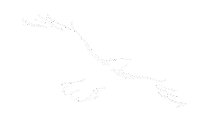
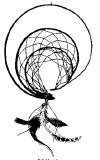
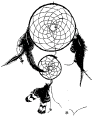
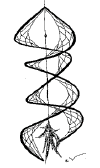
 .
.

 ONE
GREAT DAY is a diversified ever evolving four piece based in Minneapolis. We
have humbly embraced the idea that music is bigger than us all. Our style varies from acoustic pop
to electric funk blues. If it feels good then we'll play it. This is our identity. Just listen to our music and enjoy it as it
is. God Bless all!!!
ONE GREAT DAY
!!!
ONE
GREAT DAY is a diversified ever evolving four piece based in Minneapolis. We
have humbly embraced the idea that music is bigger than us all. Our style varies from acoustic pop
to electric funk blues. If it feels good then we'll play it. This is our identity. Just listen to our music and enjoy it as it
is. God Bless all!!!
ONE GREAT DAY
!!!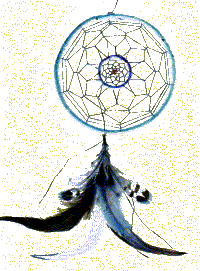
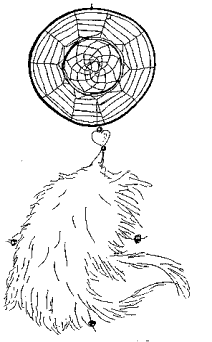
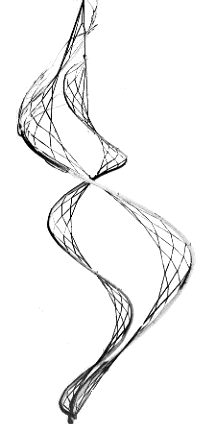
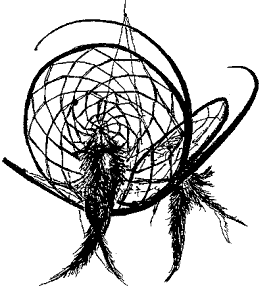
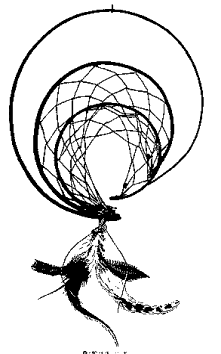

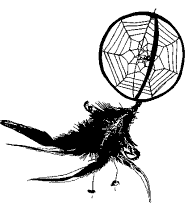
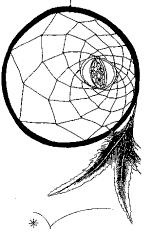



 Get
software to streamline your business and run it hands free.
Get
software to streamline your business and run it hands free.